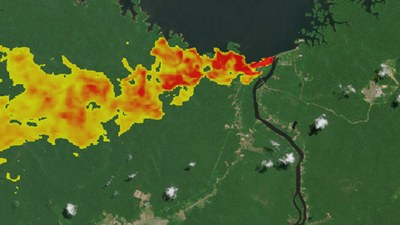Atmospheric Trace Species (ATS) Department
Trace gases and aerosols play a key role in atmospheric physics and chemistry via chemical reactions, phase transitions, and interaction with radiation. The department investigates the distribution of climate-relevant trace species in the atmosphere and the processes involved. This includes the characterization of natural and anthropogenic emissions from selected sources, as well as the investigation of transport and transformation processes. For this purpose, in-situ measurement techniques for trace gases and ions are developed. The instruments are deployed worldwide, on different platforms: research aircraft, Lufthansa in-service aircraft, helicopter towed probe, UAVs).

DLR research aircraft HALO , a platform used by the department Atmospheric Trace Species.
Credit:
Current reasearch activities focus on:
- Quantification and characterisation of methane emissions from various anthropogenic and natural sources (fossil sector, waste, wetlands, mud volcanoes)
- Quantification and characterisation of nitrous oxide emissions from the agricultural sector
- Determination of aviation emissions, in particular from alternative fuels and advanced engine technologies
- Validation of satellite data using sensitive in-situ methods
- Investigations on the detection of greenhouse gases by satellite remote sensing
- Performance of model simulations on the dispersion of trace gas emissions, supporting the interpretation of the field measurements
For this purpose, the following in situ measurement systems are applied:
- Quantum cascade lasers: Various spectrometers for carbon dioxide (CO2), methane (CH4), nitrous oxide (N2O), carbon monoxide (CO), nitrogen oxides (NO, NO2), ozone (O3), sulphur dioxide (SO2), ammonia (NH3), water vapour (H2O)
- Cavity ring down spectrometers for carbon dioxide (CO2), methane (CH4), methane isotopologues (13CH4) and ethane (C2H6)
- Mass spectrometers for the detection of trace gases and ions
- Chemiluminescence detectors for nitrogen oxides (NOx) and reactive nitrogen (NOy)
- UV and IR absorption photometers for ozone (O3) and carbon dioxide (CO2)
- Vacuum UV fluorescence detector for carbon monoxide (CO)
Links
Contact
Dr. Anke Roiger
Head of Department
Institute of Atmospheric Physics
Atmospheric Trace Species
Münchener Straße 20, 82234 Oberpfaffenhofen-Wessling

